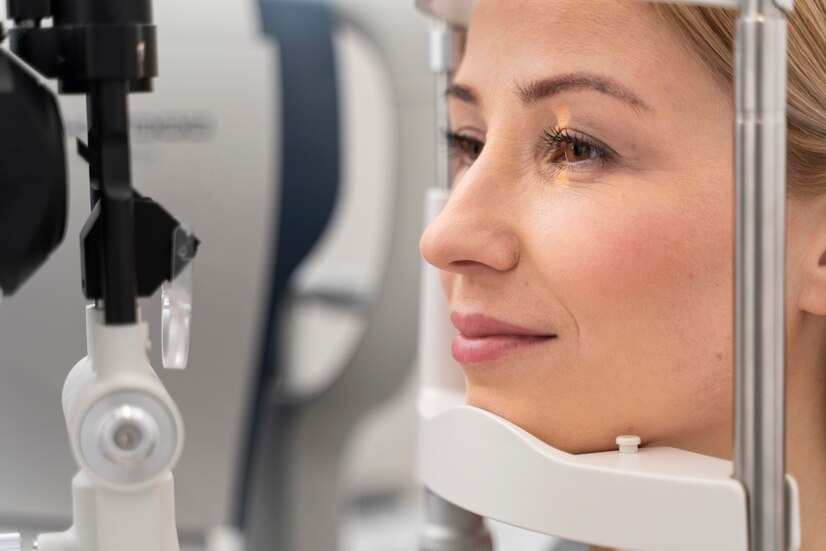Imagine waking up one morning to blurry vision, noticing tunnel vision creeping in, or even worse, the lights dimming around you entirely. Unfortunately, this isn’t just a nightmare scenario, it’s the harsh reality for millions suffering from glaucoma, a leading cause of irreversible vision loss. But here’s the good news: with awareness and early intervention, you can significantly protect your precious sight. So, let’s shed some light on the silent thief of vision, glaucoma, and empower you to safeguard your eyes.
What is Glaucoma?
Glaucoma isn’t one single disease, but rather an umbrella term for a group of eye conditions that share a common villain: increased pressure within the eye. Think of your eye as a fluid-filled balloon. Normally, this fluid drains at a steady rate, maintaining a healthy pressure that keeps everything functioning smoothly. In glaucoma, the drainage channels get clogged, causing fluid to build up and inflate that “balloon,” ultimately putting immense pressure on the optic nerve, responsible for transmitting visual information to the brain. This relentless pressure gradually damages the nerve fibers, leading to vision loss that can be irreversible if left untreated.
Different Glaucoma Types: Each Thief with a Unique Tactic
While the pressure culprit remains the same, different types of glaucoma employ various tactics to cause trouble:
- Open-angle glaucoma: This most common form acts like a slow, sneaky thief, gradually clogging the drainage channels over years, often without any noticeable symptoms until significant vision loss occurs.
- Angle-closure glaucoma: This one acts more like an aggressive mugger, suddenly blocking the drainage channels, leading to rapid pressure buildup, severe pain, redness, and blurry vision. Immediate medical attention is crucial in this case.
- Normal-tension glaucoma: Despite normal eye pressure readings, some individuals still experience optic nerve damage, suggesting other factors might be at play.
- Secondary glaucoma: This arises as a consequence of other eye conditions like injuries, inflammation, or tumors.
Warning Signs: Listen to Your Eyes!
Early diagnosis is key in preserving your vision with glaucoma, so listen closely to your eyes for any potential warning signs:
- Blurred vision or vision loss, especially peripheral: This is often a later symptom, but crucial to catch early.
- Tunnel vision: Your field of vision starts narrowing, like looking through a tunnel.
- Haloes around lights: You might see rainbow-colored rings around light sources.
- Eye pain: This is more common with acute angle-closure glaucoma.
- Sudden onset of redness and blurry vision: This again points towards acute angle-closure, needing immediate medical attention.
Remember, not everyone experiences all these symptoms, and some might be subtle. Regular eye exams are your best defense, even if you feel perfectly fine.
Real-Life Example: Sarah’s Story of Sight Saved
Amber, a busy accountant in her late 50s, had always prioritized her physical health but neglected her eye care. One day, while driving home, she noticed a strange blurring in her peripheral vision. Initially dismissing it as tiredness, the blur persisted, prompting her to finally schedule an eye exam. To her shock, she was diagnosed with open-angle glaucoma. Fortunately, the early diagnosis allowed her to start treatment immediately, effectively halting the progression and preserving her vision. Amber’s story highlights the importance of regular eye exams, even in the absence of obvious symptoms.
Safeguarding Your Sight: Your Action Plan
While there’s no cure for glaucoma, early detection and treatment can significantly slow its progression and protect your vision. Here’s your action plan:
- Schedule regular eye exams: Aim for at least every two years, more frequently if you’re at higher risk.
- Know your family history: Glaucoma can have a genetic link, so knowing your family’s eye health is crucial.
- Maintain a healthy lifestyle: Eating a balanced diet, exercising regularly, and managing chronic conditions like diabetes can benefit your eye health.
- Be aware of risk factors: Age, ethnicity, certain medications, and even nearsightedness can increase your risk.
- Listen to your eyes: Don’t ignore any changes in vision or discomfort.
- Talk to your doctor: Discuss your concerns and risk factors to create a personalized eye care plan.
By taking charge of your eye health and being proactive, you can empower yourself to keep glaucoma at bay and cherish the gift of sight for years to come. Remember, early detection is your strongest weapon in this fight. Don’t let the silent thief steal your vision; raise your awareness, take action, and protect your precious sight.
